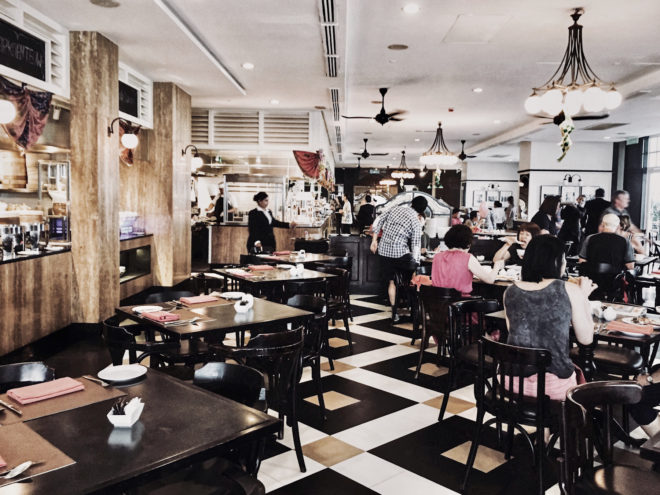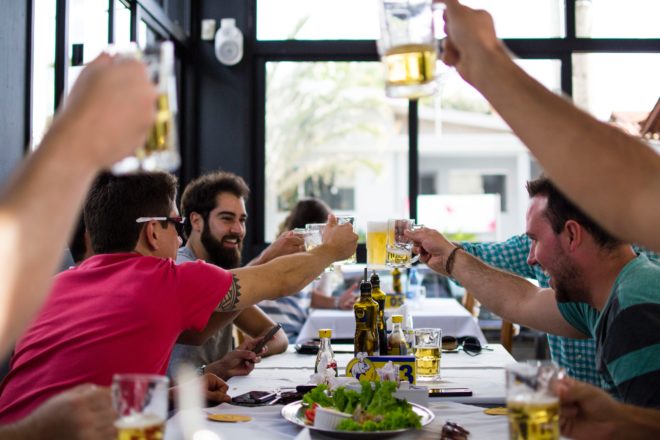The Ultimate in Carbon Friendly Restaurants

It’s well worth the effort to create carbon friendly restaurants.
Today, more than ever, people are concerned about the environment. As a restaurant owner, you may share this concern and wonder what you can do.
You can make changes that lower your carbon footprint if you’re ready to renovate your existing restaurant space.
In this article, we look at the ultimate in carbon friendly restaurants to inspire you to make changes, too.
First, let’s look at what carbon friendly means.
The Carbon Footprint
Your carbon footprint is the amount of energy, greenhouse gases, and waste that is generated by your restaurant on any given day.
If you’re like most restaurants, that’s a pretty big footprint.
How do you calculate your carbon footprint? You can search Google for carbon footprint calculators that give you a pretty good idea of your restaurant’s carbon emissions.
Once you know your carbon footprint, you can set about changing it. Now let’s look at a few restaurants doing it right.
La Condessa in Austin, Texas
This eco-friendly restaurant supports local sustainable food movements including Urban Roots. This program works to empower teens and young adults through farm-based youth leadership programs and paid internships.
They are also part of the Farm Project that links consumers directly to local farms.
Finally, they are dedicated to sustainable drinking habits when it comes to their Bat-Friendly Tequila.
When most farmers harvest the Blue Agave plants for tequila, they do it before the flower can bloom. This damages the population of bats that pollinate the agave flowers and ultimately the genetic health of the plant itself.
Their Bat Friendly Tequila preserves both the plant and the bat by asking tequila farmers to allow at least five percent of their agave plants to flower. These blooms provide food for the bats who in turn strengthen the diversity of the Blue Agave plants.
Uncommon Ground in Chicago, Illinois
This restaurant created the first certified organic rooftop farm in the United States to supply their menu.
They use Earth Boxes to grow their plants as they drastically reduce the amount of water needed and the evaporation rate. In addition, the Earth Box plastic cover helps return condensed water vapor to the potting mix. Plants cannot be over-watered or under-watered.
In addition, they have two rooftop honeybee hives to provide pollination for their plants as well as in their community. This helps support a bee population in crisis as well as the crops.
Diners enjoy the fruits, vegetables, herbs, and honey from the certified organic rooftop farm in many dishes across the menu.
Root Down in Denver, Colorado
This clever restaurant is 100% wind-powered. It was also constructed using 75% reclaimed, reused, and recycled materials.
In addition, they only serve seafood that is certified by the Marine Stewardship Council and is a “Best Choice Green” by the Monterey Bay Seafood Watch. They choose meat, dairy, poultry, and produce from a network of more than 50 local producers.
Root Down takes it further and has a 4,000 square foot garden in the middle of the city where they grow many of their own seasonal vegetables.
They also use cleaning products and sanitizers that are biodegradable. They compost and recycle, diverting on average 80% of their waste.
Now that we’ve looked at some restaurants who are carbon friendly, let’s look at how you can renovate your existing space and processes to more environmentally friendly.

Your customers are happy dining in carbon friendly restaurants.
Step #1: Reduce Waste
Restaurants waste up tens of thousands of pounds each year.
You can combat this with an inventory management tool that helps you control your inventory. You can also stay on top of expiration dates by using stickers to flag items to use first. In addition, you can donate your surplus food to homeless shelters and food kitchens.
Step #2: Use Green Cleaning Products
Take a tip from Root Down in Denver and swap out conventional cleaners for eco-friendly brands. Look for the Green Seal on certified cleaning chemicals.
Step #3: Grow Your Own Produce
This is one of the best ways to be more carbon friendly. You can grow your own just as some of the restaurants mentioned in this article do.
Try roof top gardens, containers, or even your own small acreage.
If none of those are options, be sure to shop local. This reduces your carbon footprint by using less gas, too. Look to the organic farmers in your area for produce, cheese, and meat.
Step #4: Reduce, Reuse, and Recycle
The 3 Rs have been around forever. Are you following these practices? Here are some tips:
- Use only plastic recyclable to-go containers.
- Recycle wood boxes, glass bottles, plastic, and cardboard
- Sign the Last Straw Pledge
- Buy floor mats from 100% recycled materials.
- Don’t use Styrofoam.
- Use reusable cups.
Step #5: Compost
This is one of the best ways to reduce food waste and reduce greenhouse gases.
Set up separate receptacles in your kitchen to dispose of food waste. Train your staff on what can and can’t go in it. At the end of each shift, dump the can content in your outdoor compost bin.
Then, once it’s broken down, use it to fertilize your own restaurant’s garden.
Step #6: Have a Sustainable Dining Room
When it comes to outfitting your tables and chairs, buy local. Check out your local woodworkers.
You also want to make sure you know where the wood is coming from, and that it was farmed sustainably.
To Conclude
Why reduce your carbon footprint? Simply because carbon friendly restaurants will help preserve our planet.
Restaurant sustainability practices aren’t just trendy, they’re an actual movement in the hospitality industry. In fact, your consumers are demanding it. (tweet this)
This is why the farm-to-table movement has grown so quickly. You’ll even find that nearly 90% of consumers are more loyal to businesses who practice sustainability.
What’s more, your diners are even willing to pay more to eat at restaurants who take greater care with their carbon footprint.
Finally, if you’re ready to take the plunge and work on carbon free dining, you can even become a certified carbon free dining partner by visiting Carbon Free Dining.
You can also check out the Green Restaurant Association for more certification offerings.
Being more carbon friendly shows your customers you care about the environment and want to enhance their overall dining experience when in your restaurant. (tweet this)
At Restaurant Engine, not only do we create great, responsive websites, but you can count on us to create a website that drives business to all your restaurants and edges you above the competition by using mobile-friendly design with a terrific user experience. Ready to take the plunge and create a website with an online menu, blog and beautiful photos? Get your free website consultation today!
Images: Van Thanh and Fábio Alves on Unsplash


Step #7: Use compostable wool grease filters in your extraction hood. These filters are biodegradable and eliminate the need to clean your extraction hood with any harsh chemicals or waste water doing so. 🙂 In New Zealand we call these Shepherd Filters, but I believe in the US they are named something different. Learn more about them here >> https://prescoenvironmental.co.nz/products/shepherd-filters/